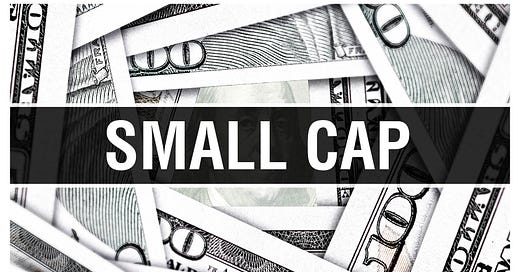The Power of Small Stock Investing
The key to avoiding recessionary blowouts with small stocks is understanding what makes them thrive when inflation is high.
Since the mid-1920s to mid-1990s, history proves the smallest 20% of NYSE stocks have chalked up an average annual return of 12.2%. By contrast, large stocks, as measured then by the S&P 400 industrials, averaged only 10.2%.
As our table shows, small stocks have done much better when inflation has been on the move. Since 1926, whenever the CPI rose over a 5-year period, small stocks led the way. And when the CPI was rising at a 5% clip or higher, the tally was small stocks 21.2% a year and big stocks only tallying 9.4%.
CPI growth of over 7% widened the gap even more, with small stocks posting gains three times larger than the big boys.
So, why do small stocks do so well in times of rising inflation?
Simply because on average they have more growth potential and entail more risk than big stocks. They perform best when investors are focusing more on growth and less on risk.
When economic growth is blasting ahead, inflation is typically rising. Investors' paramount concern at such times is keeping up with inflation. Small stocks’ earnings can grow much faster when inflation is high and rising than they can when it's low or falling. For one thing, faster inflation causes market conditions to be less competitive. Protecting and gaining market share becomes less important than generating higher sales. There's enough to go around for both the small and large to profit.
When competition isn't so intense, it's far easier for a $100 million dollar company to double its revenue than it is for a multibillion-dollar company to do so.
In other words, even if they don't take market share from the big boys, the small stocks will add sales. And the smaller of a company they are, the less of an increase it will take to generate a higher percentage gain.
Small stocks' close relationship with inflation makes them a great inflation hedge. In fact, history shows that, except when inflation is really flying, they've done a better job than gold, the quintessential inflation hedge.
The price of gold was not deregulated until the early 1970s, when then-President Nixon took the world off the gold standard. Consequently, we only have records for free market gold prices for the past 50 years or so. But since the early 1970s, whenever CPI inflation has been at least 7% and rising, gold and other precious metals have averaged a return of about 16% per year. That's far less than small stocks' average annual return of 21.2% gain during that same period of time.
Stay tuned for next week's article on how to spot the early danger signs of small stocks and the signal of when to sell. Sharing is caring, folks! Feel free to share this article with a friend or fellow investor!
Get In Touch
Our investment professionals understand that building a wealth management strategy can be a bit overwhelming. Take your first steps toward financial freedom by scheduling a no-obligation, investment consultation with a registered Investment Adviser Representative.
FOLLOW THIS LINK TO REGISTER VIA OUR WEBSITE FOR AN INVESTMENT CONSULTATION!







